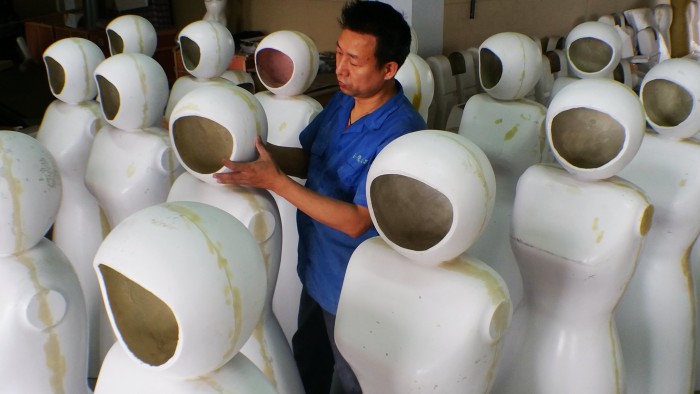Growth of robotics in emerging markets captures fund investors’ imaginations

Roula Khalaf, Editor of the FT, selects her favourite stories in this weekly newsletter.
The headlines are stark: “Robots will steal your job.” Machines are already revolutionising medicine and replacing shop assistants. They are expected to take over 11m jobs by the 2030s, according to Deloitte, the consultancy.
Advocates wax lyrical about cost savings and increased productivity. Opponents say robots could cause the world economy to implode.
Asset managers, meanwhile, think robots and automation are among the best investment opportunities of the decade. Pictet Asset Management, the Swiss fund house with £103.5bn in assets under management, says the industry is forecast to expand as much as four times faster than the global economy over the next decade.
Last October it launched the Pictet-Robotics mutual fund, which now has about $500m in assets under management.
“By focusing on this theme, we can get higher growth and should be able to get better returns than a typical European-focused fund,” says Peter Lingen, co-manager of the Pictet-Robotics fund.
The fund’s biggest holdings are spread across technology, medical and industrial companies. They include Alphabet, the parent company of Google, which is working on self-driving cars, and Intuitive Surgical, which designs and builds surgical robotic systems.
Industrial group Roper Technologies ranks among its 10 largest holdings.
Another manager tapping into the robotics trend is ETF Securities, the UK-based provider of exchange traded funds, which are traded on a stock exchange and typically follow an index, making them cheaper to invest in. ETF Securities in 2014 launched Europe’s first global robotics ETF with Robo-Stox, which creates fund indices.
The product tracks an index of 79 companies involved in the global robotics and automation industry.
ETF Securities defines a robot as a machine that takes the role of a human and automates it to allow mass production to take place.
Howie Li, co-head of ETF Securities’ Canvas platform, argues that much of the growth will be driven by companies in emerging markets buying robotics. The trade body IFR World Robotics estimates that the worldwide annual supply of industrial robots is growing at more than 15 per cent a year on average.
“Emerging markets are buying robots,” says Mr Li. “Indonesia and Taiwan are aggressively buying robots in manufacturing lines.”
However, the main driver of growth is expected to be China, which currently has relatively few robots and mechanised systems in the workplace.
According to ETF Securities, the global average number of robots per employee in the workplace is 66 for every 10,000 employees. This number falls to approximately 30 for China.
“We expect China to catch up on robot density. There is still a lot of manual labour but, as we’re going to get wage inflation, we will see robotics come in,” says Mr Li.
But not everyone is convinced a robotics fund is the best place to park money. Ben Seager-Scott, director of investment strategy at Tilney Bestinvest, the UK wealth manager, says anyone looking to invest in niche areas must consider the investment case.
“One of the challenges to these type of approaches is they are often driven by an attractive story, such as the ‘rise of the robots’, but investors should be careful that they also give consideration to some of the fundamental metrics, such as valuation,” he says.
“It’s far too easy to get pulled in by the story but [find] it is overvalued. You need to make sure the story is turned into a bona fide investment case.”
Adam Laird, passive investment manager at Hargreaves Lansdown, the investment platform, adds: “My feeling on this is that investors should be looking more broadly than just this niche itself. Many investors are better off with a broader technology or industrial investment rather than sticking rigidly to this theme. That way they are spreading the risk more.”
Performance of robotic funds and ETFs has been less than stellar. So far this year, Pictet’s fund has fallen 7.1 per cent and ETF Securities’ product is down 7.8 per cent, according to Morningstar.
Mr Lingen admits that the Pictet-Robotics fund has had a slightly “rocky start”, given its exposure to industrials, China and technology, which have all suffered during the recent stock market turmoil. However, he believes that the long-term growth potential is huge. “Two years ago we almost laughed at autonomous cars, but now we’re almost there,” he says.
Marie-Laure Schaufelberger, product specialist in thematic equities at Pictet, adds: “It is still early days. Over the next five to seven years, we expect [this fund] to outperform.”
Comments